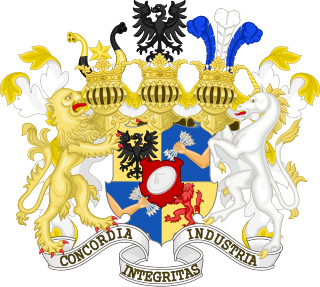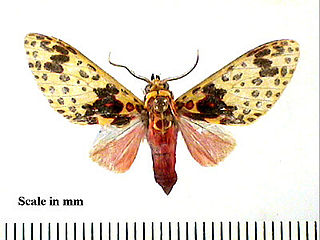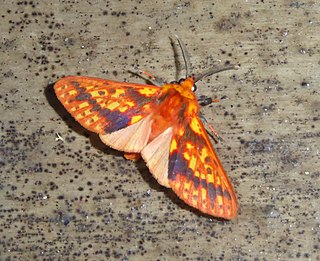
The Rothschild family is a wealthy Jewish family originally from Frankfurt that rose to prominence with Mayer Amschel Rothschild (1744–1812), a court factor to the German Landgraves of Hesse-Kassel in the Free City of Frankfurt, Holy Roman Empire, who established his banking business in the 1760s. Unlike most previous court factors, Rothschild managed to bequeath his wealth and established an international banking family through his five sons, who established businesses in London, Paris, Frankfurt, Vienna, and Naples. The family was elevated to noble rank in the Holy Roman Empire and the United Kingdom. The family's documented history starts in 16th century Frankfurt; its name is derived from the family house, Rothschild, built by Isaak Elchanan Bacharach in Frankfurt in 1567.

Rosacea is a long-term skin condition that typically affects the face. It results in redness, pimples, swelling, and small and superficial dilated blood vessels. Often, the nose, cheeks, forehead, and chin are most involved. A red, enlarged nose may occur in severe disease, a condition known as rhinophyma.

Aline Caroline de Rothschild, Lady Sassoon was a French socialite and daughter of Cécile Anspach and Baron Gustave de Rothschild of the Rothschild family.

Rhinophyma is a condition causing development of a large, bulbous nose associated with granulomatous infiltration, commonly due to untreated rosacea. The condition is most common in older white males.

Amaxia is a genus of moths in the family Erebidae erected by Francis Walker in 1855. The type species of the genus is Amaxia pardalisWalker, 1855.

Halysidota is a genus of moths in the family Erebidae. The genus was erected by Jacob Hübner in 1819.

Idalus is a genus of moths in the family Erebidae. The genus was erected by Francis Walker in 1855.

Leucanopsis is a genus of moths in the family Erebidae. The genus was described by Alfredo Rei do Régo Barros in 1956.

Lophocampa is a genus of moths in the family Erebidae. The genus was erected by Thaddeus William Harris in 1841. It contains around 75 species.

Melese is a genus of moths in the family Erebidae. The genus was erected by Francis Walker in 1854.

Paranerita is a genus of moths in the family Erebidae erected by George Hampson in 1901.

Steroid-induced rosacea is an iatrogenic condition from the use of either systemic steroid or topical steroids. It is nearly identical to steroid induced acne from the standpoint of etiology.
Zatrephes is a genus of moths in the family Erebidae. The genus was erected by Jacob Hübner in 1819. It was formerly considered part of the Arctiidae. It includes the former genus Ennomomima, which is now considered a synonym.

Symphlebia is a genus of moths in the family Erebidae. The genus was erected by Felder in 1874.

Trichromia is a genus of moths in the family Erebidae erected by Jacob Hübner in 1819. The members of this genus are largely indigenous to South America.

Leucophlebia is a genus of moths in the family Sphingidae first described by John O. Westwood in 1847.
Zatrephes rosacea is a moth in the family Erebidae. It was described by Walter Rothschild in 1909. It is found in French Guiana and Brazil.
Acrojana is a genus of moths in the family Eupterotidae.













